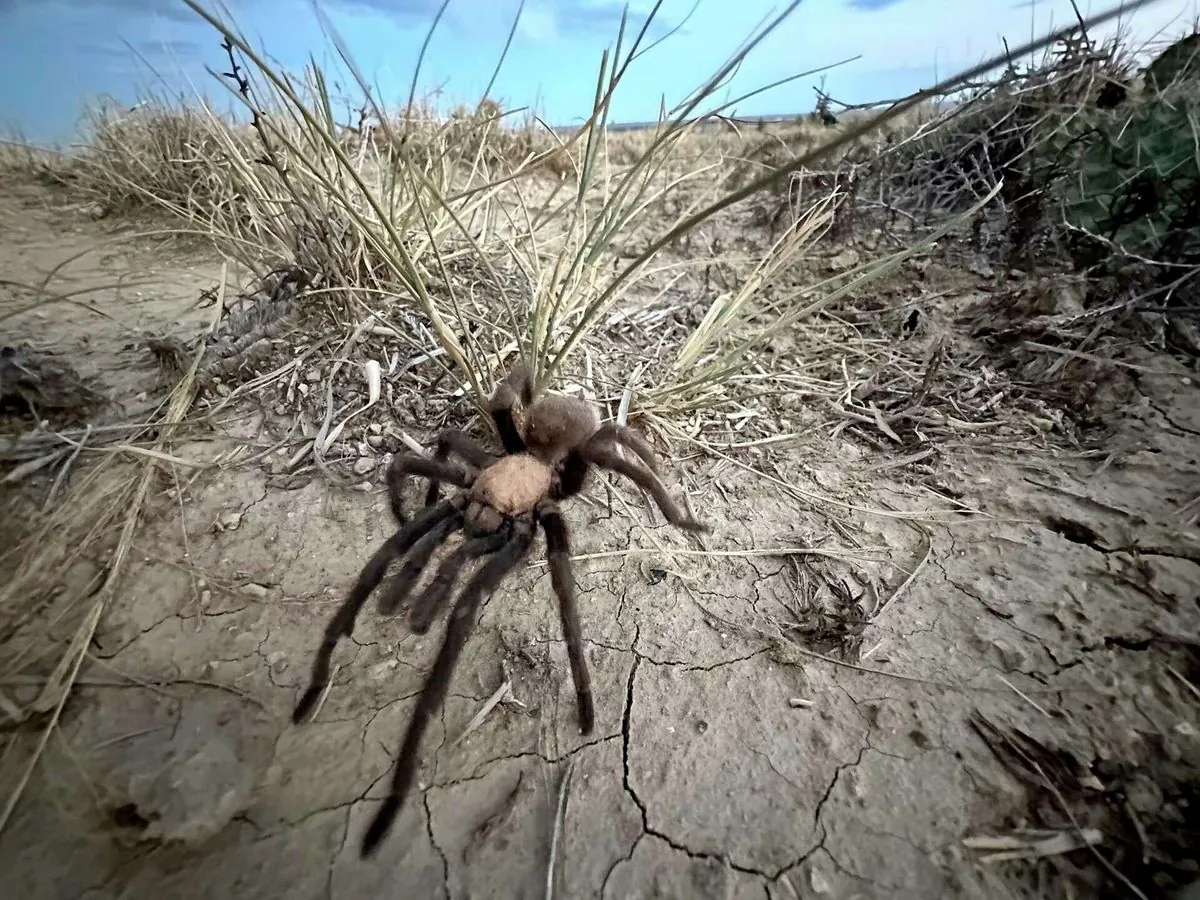In the small farming town of La Junta, Colorado, an unusual annual event has been gaining popularity. For the third consecutive year, the community has organized a festival celebrating the mating season of tarantulas, drawing hundreds of arachnid enthusiasts and curious onlookers from across the United States.
The festival, which took place last weekend, coincides with the peak of tarantula mating activity in September and October. During this period, male tarantulas emerge from their burrows in search of mates, creating a spectacle that has become a significant draw for tourism in the area.
Nathan Villareal, a tarantula breeder from Santa Monica, California, was among the visitors who traveled to witness this natural phenomenon. He reported observing dozens of tarantulas during the evening excursions, highlighting the abundance of these arachnids in the region.
The festival organizers arranged bus tours just before dusk, allowing participants to observe the tarantulas in their natural habitat. As the sun set, visitors used flashlights and car headlights to spot the arachnids roaming the dry, rolling plains of the Comanche National Grassland.
Cara Shillington, a biology professor at Eastern Michigan University specializing in arachnids, provided insights into tarantula biology and behavior. She explained that male tarantulas take about seven years to reach reproductive maturity and typically live for only a year afterward, dedicating their remaining time to finding a mate.
"When you encounter them, they're more afraid of you. Tarantulas only bite out of fear. This is the only way that they have to protect themselves, and if you don't put them in a situation where they feel like they have to bite, then there is no reason to fear them."
The festival also featured various spider-themed activities, including a hairy leg contest, a vintage car parade with giant spider decorations, and a screening of the 1990 cult classic film "Arachnophobia" at the historic Fox Theater.
For La Junta residents, tarantulas are not viewed as nightmarish creatures but as an important part of the local ecosystem. The most common species in the area is the "Colorado Brown" tarantula, which forms burrows in the undisturbed prairies of the region.
The event serves an educational purpose, aiming to dispel common misconceptions about tarantulas. Goran Shikak, an arachnology graduate student at the University of Colorado Denver, emphasized the beauty of these creatures and the joy of observing them in their natural habitat.
Tarantulas belong to the spider family Theraphosidae, with over 900 species found worldwide on every continent except Antarctica. While some species can have a leg span of up to 11 inches, those found in North America are generally smaller and known for their docile nature.
The festival not only celebrates these fascinating arachnids but also highlights their importance in controlling insect populations and their potential contributions to scientific research. Some tarantula species have inspired biomimetic studies, particularly in the development of adhesive materials.
As the sun set on another successful tarantula festival in La Junta, it was clear that this unique event had succeeded in fostering a greater appreciation for these often misunderstood creatures, while also putting this small Colorado town on the map for nature enthusiasts and arachnid aficionados alike.
